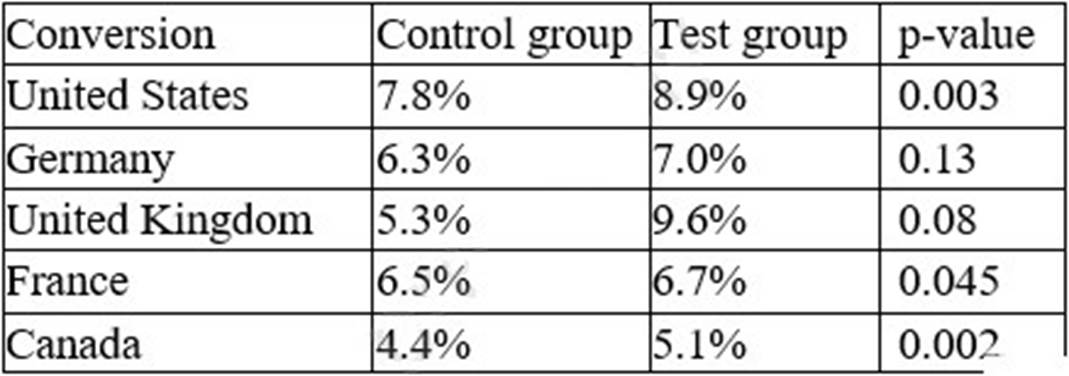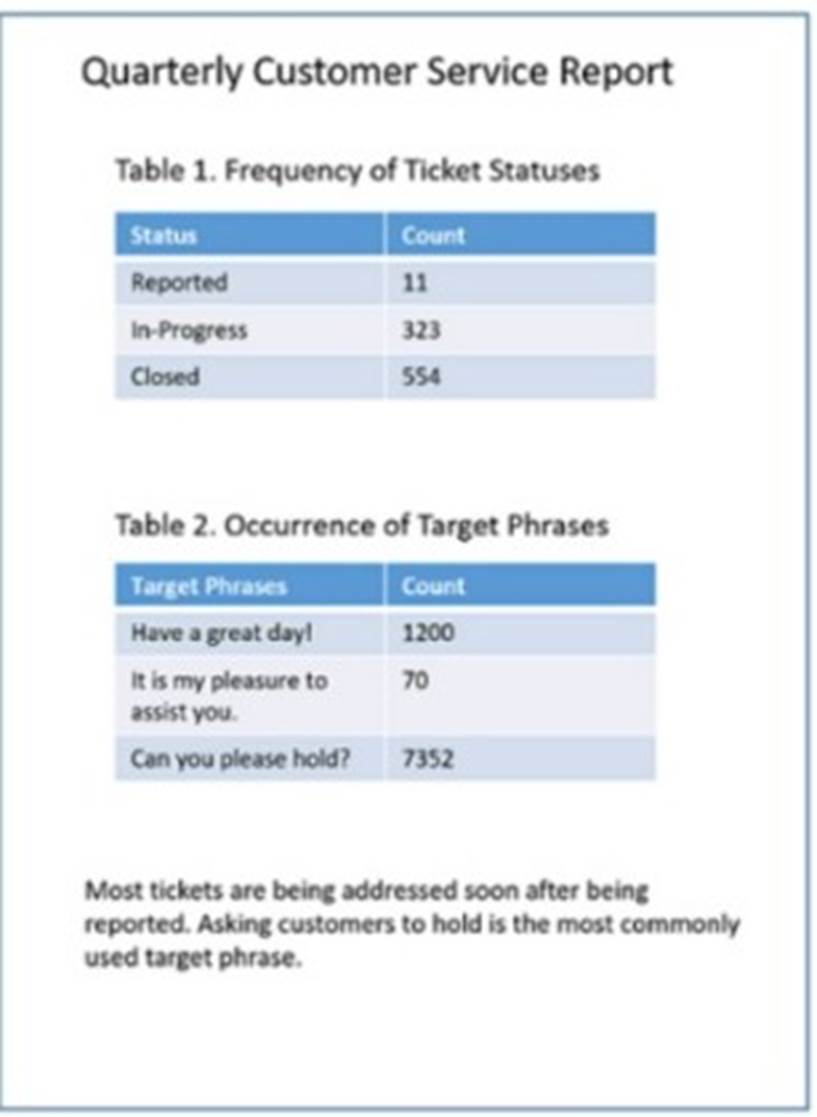The process of performing initial investigations on data to spot outliers, discover patterns, and test assumptions with statistical insight and graphical visualization is called:
Correct Answer:
C
This is because exploratory data analysis is a type of process that performs initial investigations on data to spot outliers, discover patterns, and test assumptions with statistical insight and graphical visualization, such as box plots, histograms, scatter plots, etc. Exploratory data analysis can be used to understand and summarize the data, as well as to generate hypotheses or questions for further analysis or research. For example, exploratory data analysis can be used to identify and visualize the characteristics, features, or behaviors of the data, as well as to measure their distribution, frequency, or correlation. The other options are not types of processes that perform initial investigations on data to spot outliers, discover patterns, and test assumptions with statistical insight and graphical visualization. Here is what they mean:
✑ A t-test is a type of statistical method that tests whether there is a significant difference between the means of two groups or samples, such as whether there is a difference between the average exam scores of two classes in this case. A t-test
can be used to test or verify a claim or an assumption about the data, as well as to measure the confidence or the error of the estimation.
✑ A performance analysis is a type of process that measures whether the data
meets certain goals or objectives, such as targets, benchmarks, or standards. A performance analysis can be used to identify and visualize the gaps, deviations, or variations in the data, as well as to measure the efficiency, effectiveness, or quality of the outcomes. For example, a performance analysis can be used to determine if there is a gap between a student??s test score and their expected score based on their previous performance.
✑ A link analysis is a type of process that determines whether the data is connected to other datapoints, such as entities, events, or relationships. A link analysis can be used to identify and visualize the patterns, networks, or associations among the datapoints, as well as to measure the strength, direction, or frequency of the connections. For example, a link analysis can be used to determine if there is a connection between a customer??s purchase history and their loyalty program status.
Which of the following is a process that is used during data integration to collect, blend, and load data?
Correct Answer:
B
ETL is a process that is used during data integration to collect, blend, and load data. ETL stands for extract, transform, and load, which are the three main steps involved in moving data from different sources to a common destination, such as a data warehouse or a data lake. ETL helps to consolidate and standardize data for analysis and reporting purposes. References: CompTIA Data+ Certification Exam Objectives, page 12
An e-commerce company recently tested a new website layout. The website was tested by a test group of customers, and an old website was presented to a control group. The table below shows the percentage of users in each group who made purchases on the websites:
Which of the following conclusions is accurate at a 95% confidence interval?
Correct Answer:
C
The conclusion that is accurate at a 95% confidence interval is that in general, users who visit the new website are more likely to make a purchase. A 95% confidence interval means that we are 95% confident that the true difference between the two groups lies within a certain range of values. To calculate the 95% confidence interval, we can use the following formula:
CI = (p1 - p2) ?? 1.96 * sqrt(p * (1 - p) * (1/n1 + 1/n2))
where p1 and p2 are the conversion rates for the test and control groups, respectively, p is the pooled conversion rate, n1 and n2 are the sample sizes for the test and control groups, respectively, and 1.96 is the z-score for a 95% confidence level.
Using this formula, we can calculate the 95% confidence interval for each country as follows:
Country | p1 | p2 | n1 | n2 | p | CI United States | 0.12 | 0.11 | 2000 | 2000 | 0.115 | (-0.006, 0.026) Germany | 0.06 | 0.04 | 1000 | 1000 | 0.05 | (-0.002, 0.042) United Kingdom | 0.09 | 0.07 | 1500 | 1500 | 0.08 | (-0.003, 0.053) France | 0.08 | 0.08 | 1200 | 1200 | 0.08 | (-0.024, 0.024) Canada | 0.05 | 0.03 | 800 | 800 | 0.04 | (-0.005, 0.045)
We can see that for all countries except France, the confidence interval does not include zero, which means that the difference between the test and control groups is statistically significant at a 95% confidence level. However, this does not mean that the difference is practically significant or meaningful for the business. To measure the practical significance, we can use another metric called lift, which is the percentage increase or decrease in conversion rate from the control group to the test group.
Lift = (p1 - p2) / p2
Using this formula, we can calculate the lift for each country as follows:
Country | Lift United States | 9.09% Germany | 50% United Kingdom |28.57% France|0
Given the following report:
Which of the following components need to be added to ensure the report is point-in-time and static? (Select two).
Correct Answer:
DF
To ensure that a report is point-in-time and static, it should include the date when the report was last accessed and the date on which the report was run. These components confirm the specific time frame the data represents, making the report a fixed reference that does not change with subsequent data updates or accesses. This is crucial for accurate historical analysis and for maintaining the integrity of the data as it was at the time of the
report??s creation.
References:
✑ Best practices in business reporting.
✑ Importance of time-stamping in data analysis.
✑ Guidelines for creating static reports in data analytics.
An analyst has conducted a review of business questions. Which of the following should the analyst do next to conduct an analysis?
Correct Answer:
B
After conducting a review of the business questions, the next step for the analyst is to determine the data needs and sources for analysis. This involves identifying the relevant data elements, variables, and metrics that are required to answer the business questions, as well as the data sources, formats, and quality that are available to access and use. This step will help the analyst to plan the data collection, preparation, and integration processes, as well as to assess the feasibility and limitations of the analysis1.

